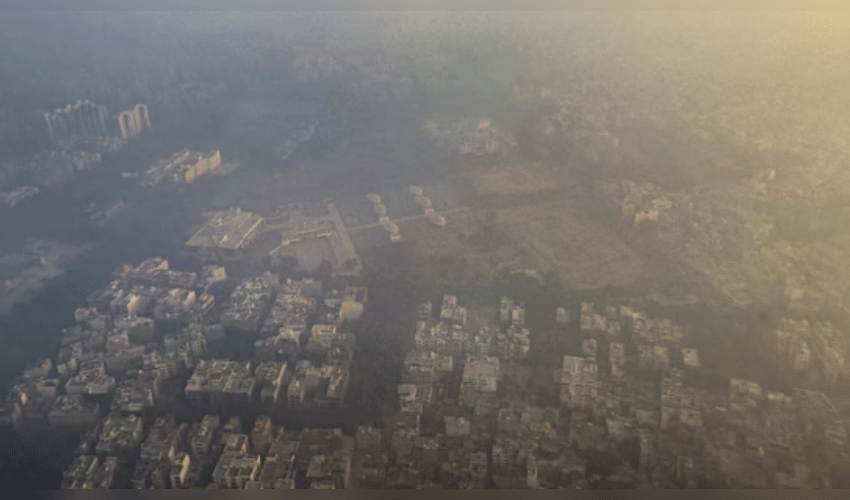News
Delhi's AQI surges drastically above 700; the city is shrouded in toxic smog and dust.
Published On Fri, 07 Nov 2025
Fatima Hasan
1 Views

Delhi woke up to a hazardous level of air pollution on Friday, with the Air Quality Index (AQI) soaring sharply past 700, reaching as high as 727 according to the Swiss air quality monitor IQAir. This dramatic spike has engulfed the city in a thick, toxic smog composed of dust, post-Diwali festivities pollution, and stubble smoke drifting in from widespread farm fires in neighboring states. Compounding the crisis is stagnant weather with low wind speeds, which traps these pollutants close to the ground and prevents dispersion, making breathing difficult and unsafe for residents.
The steep rise in pollution follows a day when Delhi’s AQI was already alarmingly high at 311 by afternoon, categorized as very poor by the Central Pollution Control Board (CPCB). The dominant pollutant continues to be PM2.5, microscopic particles that penetrate deep into the lungs and can cause severe respiratory issues. Most monitoring stations across Delhi have recorded hazardous readings over 300, pushing the capital into one of Indias most polluted cities, alongside Rohtak, as per recent CPCB data.
Several factors are converging to produce this hazardous air quality scenario. Beyond Diwali-related firework residue, the significant contributor is the burning of crop stubble in adjacent states such as Punjab, Haryana, Rajasthan, and Madhya Pradesh. Reports indicate hundreds of stubble burning incidents in these regions, fueling the formation of dense smog that drifts into Delhi’s airspace. Additionally, vehicle emissions, dust from ongoing construction, and industrial activity exacerbate the situation. The cooler weather and early winter dynamics worsen the problem by creating temperature inversions that trap pollutants near the surface.
Authorities suggest that conditions may improve slightly if wind speeds pick up, helping to clear some of the trapped pollution. Meanwhile, officials and air quality experts emphasize the urgent need for sustained measures to curb stubble burning and vehicular emissions, impose stricter dust control on construction sites, and ensure better public awareness during this critical pollution period.
For Delhi residents, this spike means taking serious precautions: avoid outdoor activities, especially for children, elderly, and those with respiratory or heart conditions; use air purifiers indoors; and wear masks if venturing outside is unavoidable. This event underscores the chronic challenge Delhi faces annually during the post-monsoon and winter months when air quality routinely deteriorates to hazardous levels.
Historically, November to February is the peak air pollution season for Delhi—with AQI often skyrocketing well above 700 due to a mix of natural and human factors. In response, the Delhi government launched the Air Pollution Mitigation Plan 2025 earlier this year, aiming for stricter vehicle emission standards, dust suppression measures, and robust monitoring. Despite these efforts, the immediate impact remains severe as seasonal factors and external pollution sources continue to challenge air quality improvements. This recent surge in Delhis AQI highlights the urgent need for coordinated action beyond the city limits, engaging neighboring states and promoting sustainable agricultural practices alongside stringent urban pollution controls to protect public health and restore cleaner air to the capital.
Disclaimer: This image is taken from Hindustan Times.



